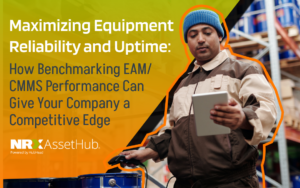Data is the backbone of modern businesses, and ensuring its accuracy and reliability is crucial for informed decision-making. Data cleansing, also known as data scrubbing or data cleaning, plays a pivotal role in maintaining data quality. It involves identifying and correcting or removing inaccuracies, inconsistencies, and discrepancies in datasets. To maximize the effectiveness of data cleansing efforts, organizations should follow best practices that streamline the process and ensure data integrity. In this blog, we will explore the top five best practices for data cleansing.

- Establish Clear Data Quality Goals:
Before embarking on data cleansing, it is essential to define clear data quality goals. Identify the specific data quality issues that need to be addressed, such as duplicate records, missing values, or inconsistent formats. By setting measurable goals, organizations can focus their cleansing efforts and track progress effectively.
- Conduct Comprehensive Data Profiling:
Data profiling is a critical step in understanding the state of your data. It involves analyzing the quality, completeness, and structure of your dataset. By conducting comprehensive data profiling, you can identify patterns, anomalies, and data quality issues that need to be resolved. This insight helps in devising targeted cleansing strategies.
- Implement Robust Data Validation Checks:
To ensure the accuracy and integrity of your data, it is crucial to implement robust data validation checks during the cleansing process. Define validation rules and checks to verify data integrity, consistency, and adherence to predefined standards. This includes checking for valid formats, data ranges, and logical relationships within the dataset.
- Leverage Automation Tools and Technologies:
Data cleansing can be a time-consuming and resource-intensive task. To streamline the process and improve efficiency, leverage automation tools and technologies. Utilize data cleansing software or platforms that offer functionalities like deduplication, data standardization, and error detection. Automation reduces manual effort, minimizes human errors, and accelerates the overall cleansing process.
- Establish Ongoing Data Governance:
Data cleansing is not a one-time activity but an ongoing process. Establishing a robust data governance framework is crucial to maintain data quality over time. Implement policies and procedures for data entry, maintenance, and updates. Regularly monitor data quality, conduct periodic data audits, and establish data stewardship roles to ensure continuous data cleanliness.

Need Help Optimizing Your Data?
Data cleansing is a critical practice to maintain data accuracy and reliability for optimal decision-making. Embrace these best practices to unlock the true potential of your data and pave the way for data-driven success.
HubHead’s benchmarking service can provide valuable support. Our experienced consultants have helped numerous companies achieve excellence through comprehensive benchmarking analysis that leverages various benchmark types.
Contact us today by following the links below to download our brochure or book a meeting with one of our consultants.

Maximizing Equipment Reliability and Uptime: How Benchmarking EAM/CMMS Performance Can Give Your Company a Competitive Edge
Working Smarter, Not Harder: Strategies for Improving EAM/CMMS Performance Based on Benchmarking Results
Revamping Maintenance Processes: How Benchmarking Boosts Efficiency
Share this article




